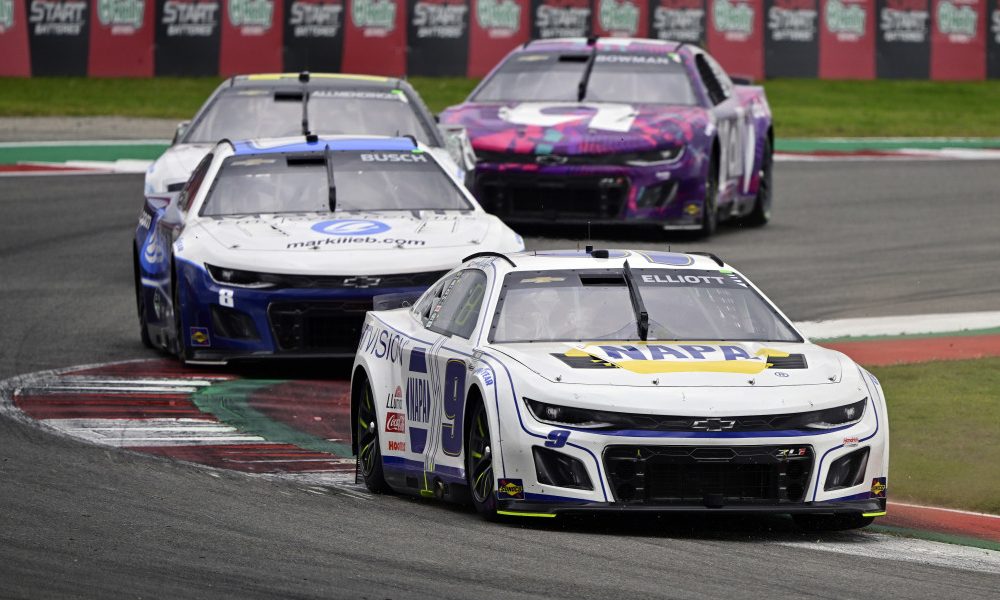NASCAR’s Elton Sawyer doesn’t want officiating to be the story at Circuit of the Americas and said they are reviewing their procedures for the facility.
“COTA is very challenging,” Sawyer said Tuesday morning on SiriusXM NASCAR Radio. “I would rather go to Daytona, Talladega, Atlanta every day of the week from an officiating standpoint. We’re calling balls and strikes on every lap and that’s not really where we want to be.
“I commend our team in the tower. I thought they did a good job, but it’s way too much about us and not enough about the athletes and our teams and our pit stops and strategy and things of that nature. So, (there is) some work to be done.”
[lawrence-auto-related count=3 category=1423]
There were 20 penalties in the Craftsman Truck series race for drivers short-cutting the course through the esses. The same call was made 16 times in the Xfinity series race and four times in the Cup race.
“Not sure … if we will or will not be going back to COTA in (2025), but we’re preparing today, have been since basically the start of the weekend, on what we can do going forward with the facility and then how we would officiate it and what the deterrent looks like,” Sawyer said. “Obviously, being out of bounds there and it being a drive-through penalty that’s significant.
“So, a lot of things for us to digest before we get to back to COTA because, all in all, at the end of the day, it needs to be about, again, our athletes, our fans watching at home, or sitting there at the facility watching, and it doesn’t need to be about the officiating.”
NASCAR only enforces track limits in the esses at COTA and not the rest of the course. Sawyer said it comes down to where drivers can make gains throughout a lap. If they didn’t keep drivers on the track through the esses, which is Turns 3-5, they wouldn’t make the same left and right maneuvers because they would try to straighten it out. (Denny Hamlin admitted as much on his podcast Actions Detrimental after Sunday’s race).
“If you look at the other road courses that we go to … there is significant boundaries that are already built into those facilities that you’re not going to go out of bounds,” Sawyer said. “You’re going to be in the grass, or you’re going to be up against a barrier of some kind. COTA is not built that way; there’s a lot of extra asphalt there where our competitors, if there is lap time to be gained, they are going to find that asphalt.
“It puts a premium on the officiating and the lap time there. Although it’s a 3.41-mile course, there is a lot of lap time to be gained through the esses.”
Sawyer said there not being a gain in lap time is why NASCAR doesn’t police Turn 1. The tight left-hander at the top of the 133-foot hill can see drivers go three, four, or five-wide and drivers going far out to the right off the racing surface. But he also reasoned that some incidents result from drivers getting pushed out wide.
Chase Elliott’s Hendrick Motorsports team tried a similar argument of it not being intentional when their driver was called for cutting the course. Elliott got loose and missed one of the turns in the esses, but NASCAR still called the penalty. Sawyer compared it to a foul being called in NCAA basketball when, most of the time, the defender isn’t trying to foul their opponent, but the call is made.
“I would say in our situation this past weekend, the drivers are not trying to commit a foul, but the foul was committed,” Sawyer said. “So, from an officiating standpoint, you have to call that and that’s why the 9 was called. They kept coming up saying he had wheel hopped, he had got loose, whatever that may be, and that’s fair. I do believe that.
“But on the flip side, you still have to make the call or every driver, every team is going to be calling up saying, look, he got loose, he wheel hopped, so forth and so on.”
Elliott’s penalty was another reason why Sawyer said NASCAR needs to reevaluate how it officiates at COTA.
“We don’t want to over-officiate,” he said. “That’s not what we want to do. Again, we don’t need 20, 30 penalties in a race. We don’t need that. So, all of those things will be taken into consideration.
“Again, I feel the calls made on Saturday and Sunday were the correct calls based on the information we’ve given the teams, the facility and how we need to officiate it. That doesn’t mean we’re not going back today and working extremely hard in all areas, so that’s not a focal point going forward.”
